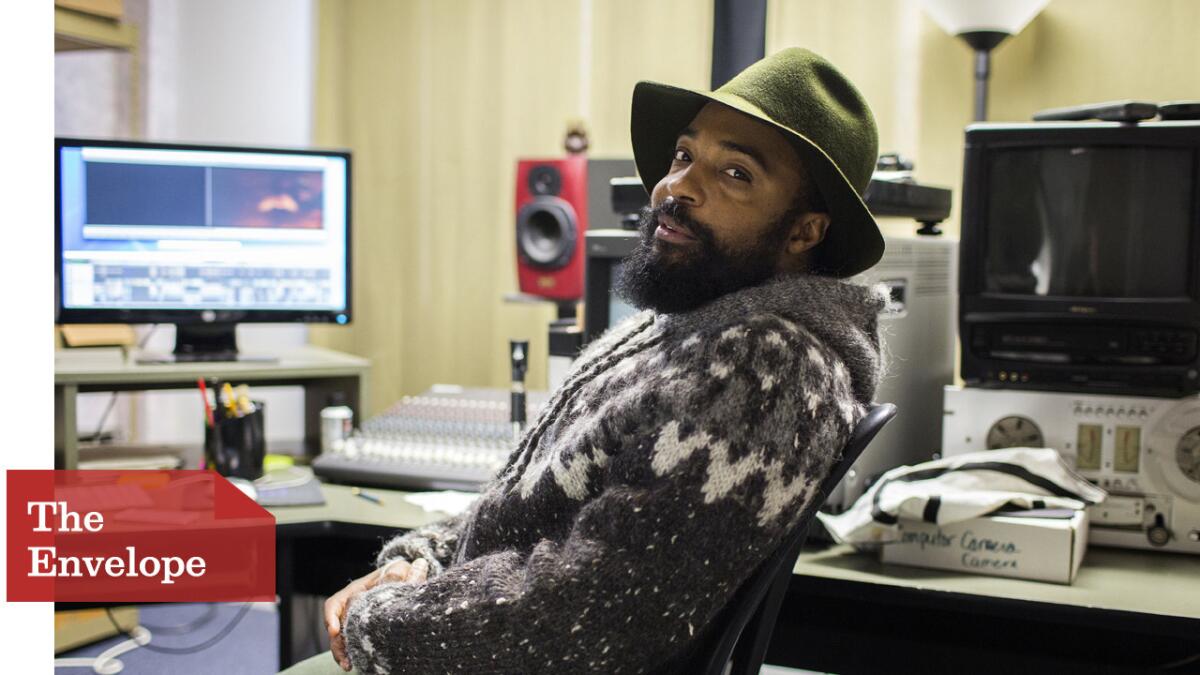The Envelope: Bradford Young balances intense ‘Selma’ and ‘A Most Violent Year’

- Share via
Two-time Sundance cinematography award winner Bradford Young has two high-profile year-end releases this year, putting him squarely in the Oscar season mix. After a decade of working on short films and documentaries, the 37-year-old notably shot 2012’s “Middle of Nowhere” and 2013’s “Ain’t Them Bodies Saints.” Now he’s reteamed with “Nowhere” director Ava DuVernay on the Martin Luther King Jr. drama “Selma” (Dec. 25) and has shot J.C. Chandor’s third feature, “A Most Violent Year” (Dec. 31).
While still in the intense final days of completing “Selma,” Young talked to The Envelope by phone from the editing room about a key sequence in that film as well as a powerful scene from “Year.”
The church-bombing sequence in “Selma” is shocking but also hauntingly beautiful. What did you and Ava DuVernay want to accomplish in that scene?
We really wanted to focus on the violence of the moment. Because obviously some of the violence that was happening during that period mirrors some of the violence we’re experiencing in our communities today. The way to get people really invested in what a great sacrifice it was is to show how brutal it was. Also, on a certain level, the nature of our existence as Africans brought to America has been very sublime. It’s been contentious, arduous and violent. On so many other levels, it’s been beautiful and glorious, meaning that out of those contentious, violent moments, a lot of glorious moments emerged.
As a scene, that sparked it off for Ava, and she passed it on to me. It’s a delicate balance of trying to make it visual but also making sure that it was communicating how damaging those moments were. We chose to use high-speed cameras to do that because you’re able to map the human body in a very particular way. It’s really trying to figure out a way to make those moments sublime. How do you make these moments that are sweet visually? It was about understanding how the body breaks apart, how the body adjusts and how the body rebounds from violence. It turned out to be everything we wanted it to be and better because when you use high-speed cameras it allows you to discover things that you can’t see with the naked eye.
Shifting gears a bit, what references did you and J.C. Chandor use to create the look of “A Most Violent Year”?
Jamel Shabazz, a New York street photographer of black and Latino life during that period, had a way of tinting and coloring his pictures that J.C. and I really loved. So when we were both sharing our references on how the movie should look, it just happened to be that. So that ignited that yellow tone in the film, and we pushed it a little harder.
The film also has a distinctive car chase that feels very much like “The French Connection.”
That scene plays back to the “Selma” scenario where you’re trying to strike a balance. “A Most Violent Year” was elegantly, meticulously composed for the first hour, hour and a half, then the last half-hour, things fall apart. How do you shoot a scene that’s so action-affiliated and still keep it anchored in your rigid, balanced, symmetrical timing sensibility? What we tried to do was figure out ways to put the camera in the same places we would have put the camera if we were just shooting two people talking at a table. All that stuff with me in the car is on the shoulder, hand-held and raw and not so pretty.
It was so disorienting for the viewer.
We actually shot a lot of the interior of the car with green screens because of time — you just don’t have the luxury of having all of the background. In the cutting room, J.C. and Ron [Patane], the editor, realized that it just didn’t work. So my camera assistants went out and shot a few of those additional driving scenes with the camera in the car, and it just changed the stakes. It became so much more active, involved and intimate. Again, it’s not as pretty as all the other stuff, but I think it works. When we shot it against green, it was disconnected in a very obvious way.
More to Read
Sign up for The Envelope
Get exclusive awards season news, in-depth interviews and columnist Glenn Whipp’s must-read analysis straight to your inbox.
You may occasionally receive promotional content from the Los Angeles Times.










